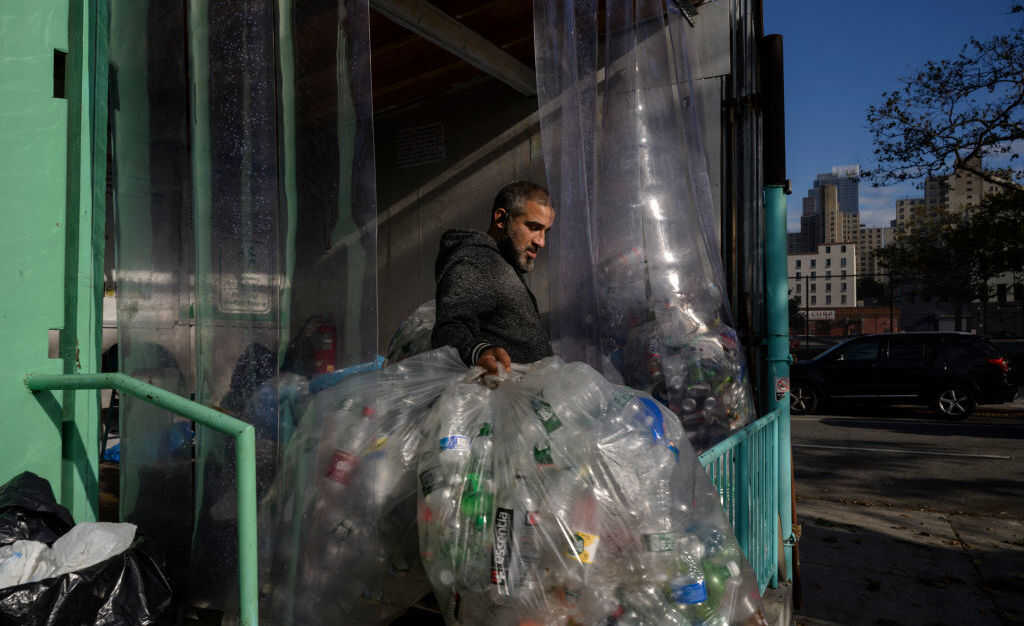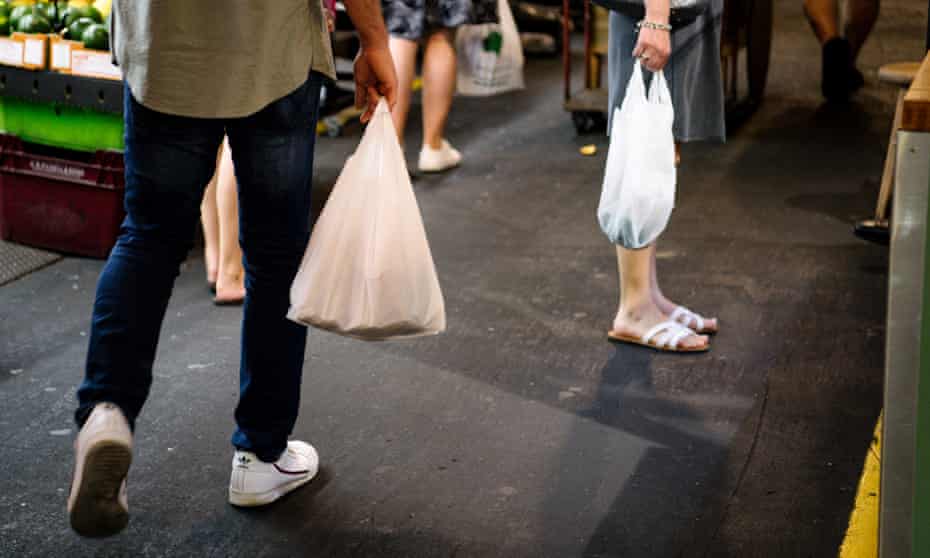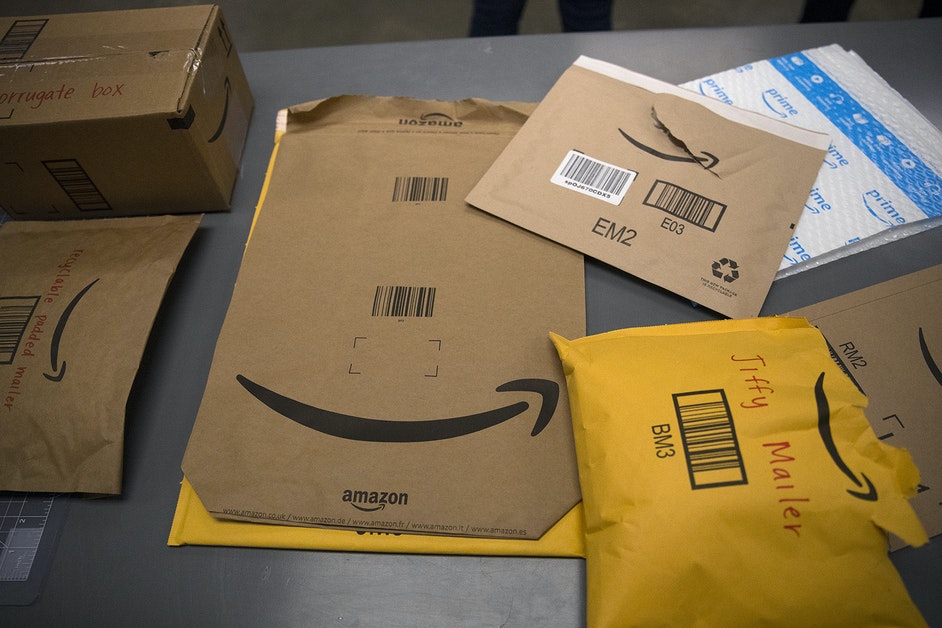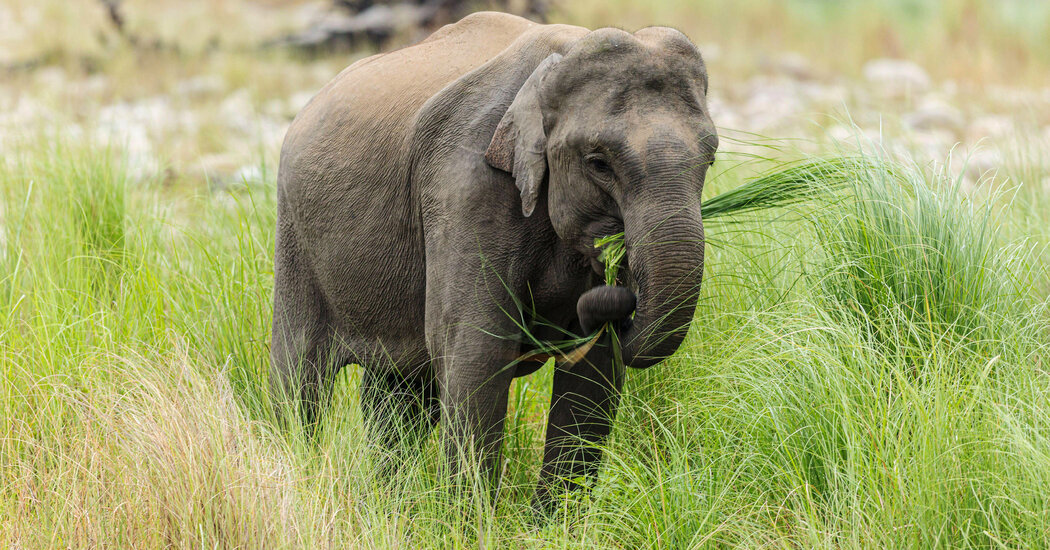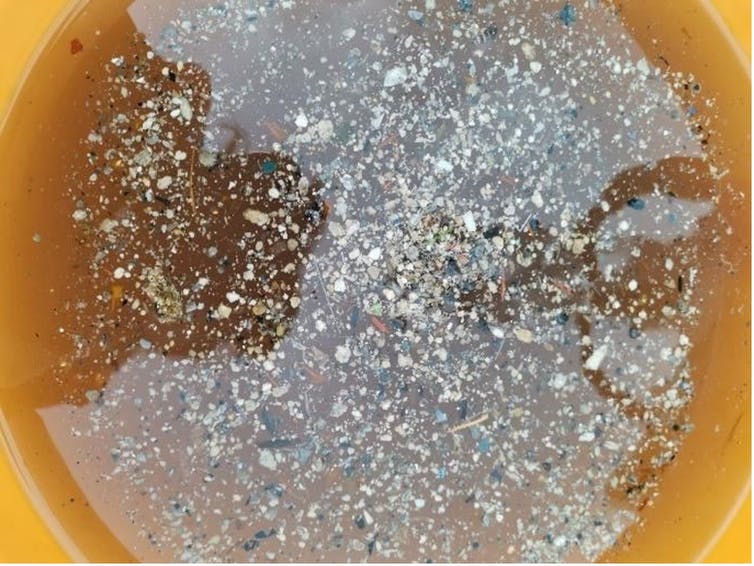Enlarge this image
A worker carries used drink bottles and cans for recycling at a collection point in Brooklyn, New York. Three decades of recycling have so far failed to reduce what we throw away, especially plastics.
Ed Jones/AFP via Getty Images
Ed Jones/AFP via Getty Images
After recycling’s failure to appreciably reduce the amount of plastic the U.S. throws away, some states are taking a new approach, transferring the onus of recycling from consumers to product manufacturers. In the past 12 months, legislatures in Maine, Oregon and Colorado have passed “extended producer responsibility” laws on packaging. The legislation essentially forces producers of consumer goods — such as beverage-makers, shampoo companies and food corporations — to pay for the disposal of the packages and containers their products come in. The process is intended to nudge manufacturers to use more easily recyclable materials, compostable packaging or less packaging. Now, the New York legislature is deliberating two extended producer responsibility bills as its session nears its June 2 close. Lobbying by business and environmental groups has been particularly intense around details such as what recycling goals must be met and who sets them. Industry and environmentalists alike believe that when a state as big as New York adopts a law, it creates a template or standard that other states might adopt too.
“I’m exhausted,” said Judith Enck, founder and president of the advocacy group Beyond Plastics, who has been lobbying legislators on the issue. “If you have a state the size of New York get it wrong on extended producer responsibility, it would have a ripple effect on other states.” What would this approach look like? Extended producer responsibility — the ungainly name comes from a 1990 paper by Swedish academics Thomas Lindhqvist and Karl Lidgren — took root in Europe 30 years ago. Many U.S. states have such policies for e-waste and mattresses. But their adoption for packaging is fairly recent in the U.S., and those programs won’t be fully up and running for years. While each state’s legislation varies, the system generally works like this: Beverage companies, shampoo-makers, food manufacturers and other producers will keep track of how much of each sort of packaging they use. These producers will reimburse government recycling programs for handling the waste, either directly or through a consortium called a “producer responsibility organization.” Fees will be lower for companies that use easily recyclable, compostable or even reusable packaging, a mechanism that supporters say will provide incentives to adopt more sustainable practices. Recycling centers will use the money to cover their operating costs, expand outreach and education, and invest in new equipment.
“We think corporations will produce less virgin materials because they are charged by the amount they put out there, and certainly less eco-unfriendly materials,” said New York state Sen. Todd Kaminsky, a Democrat from Long Island who sponsored one of the bills pending in Albany.

